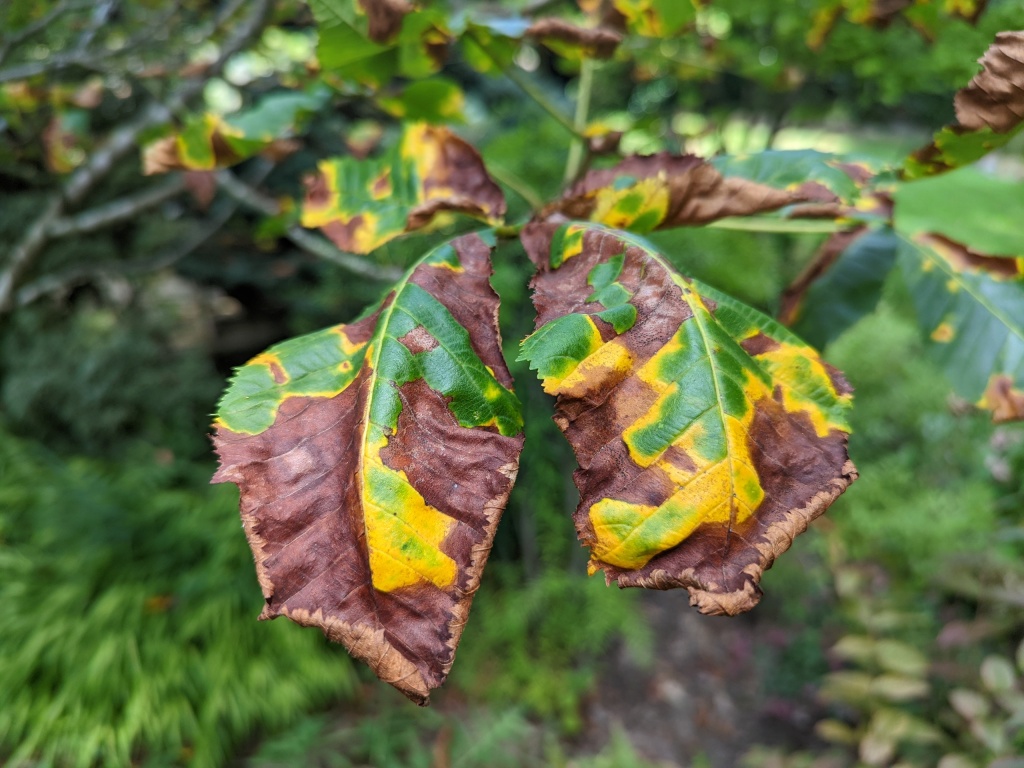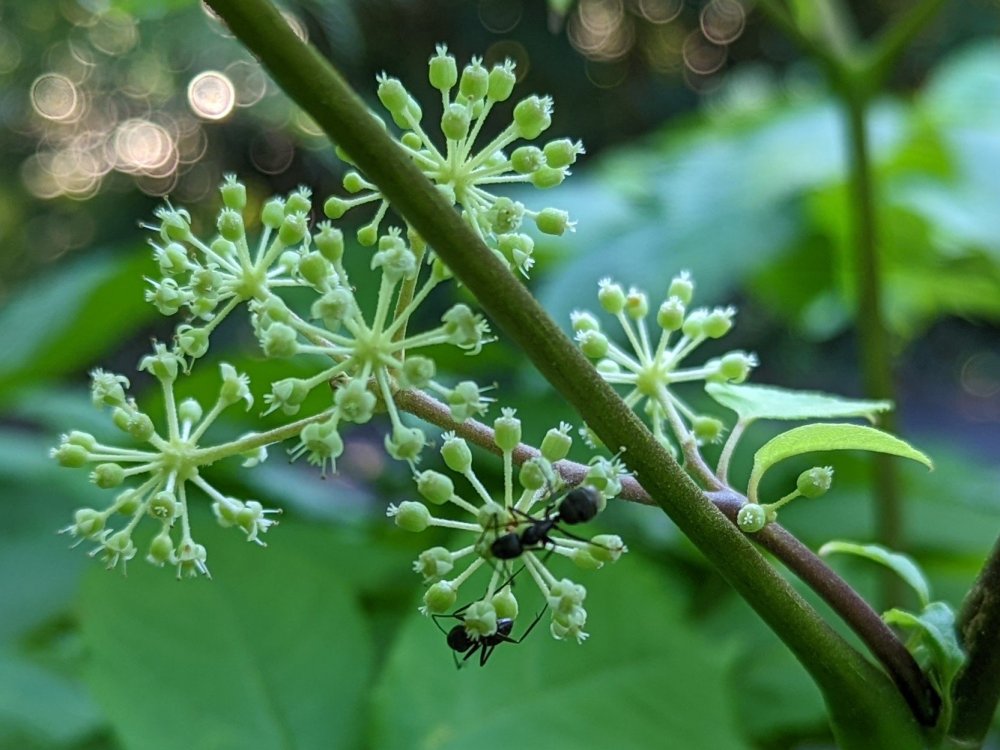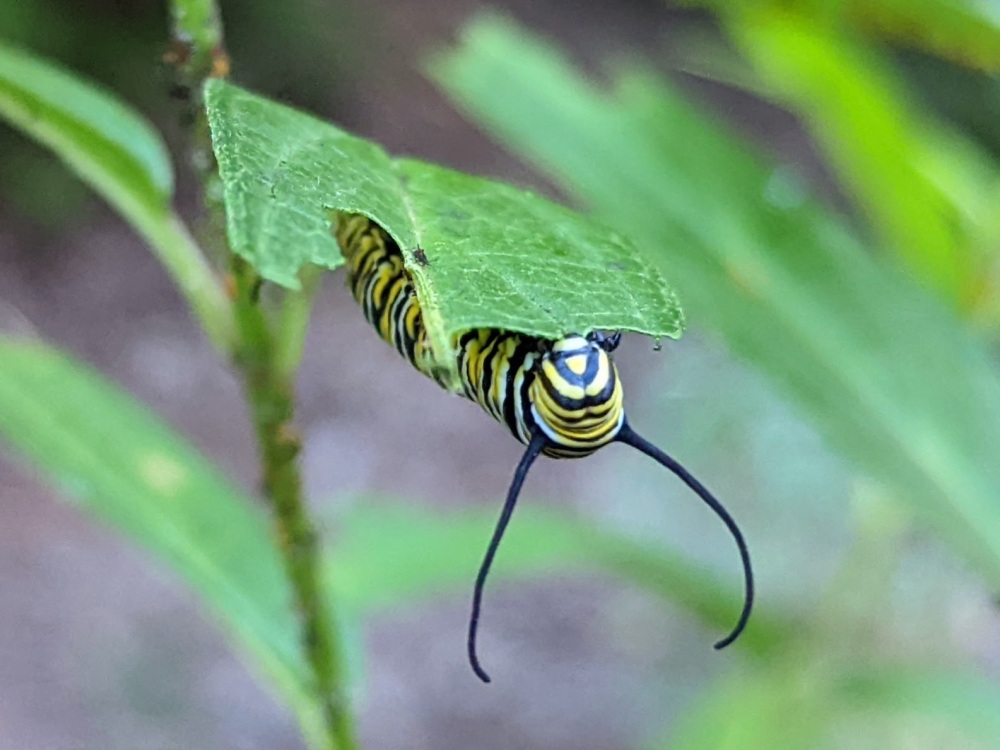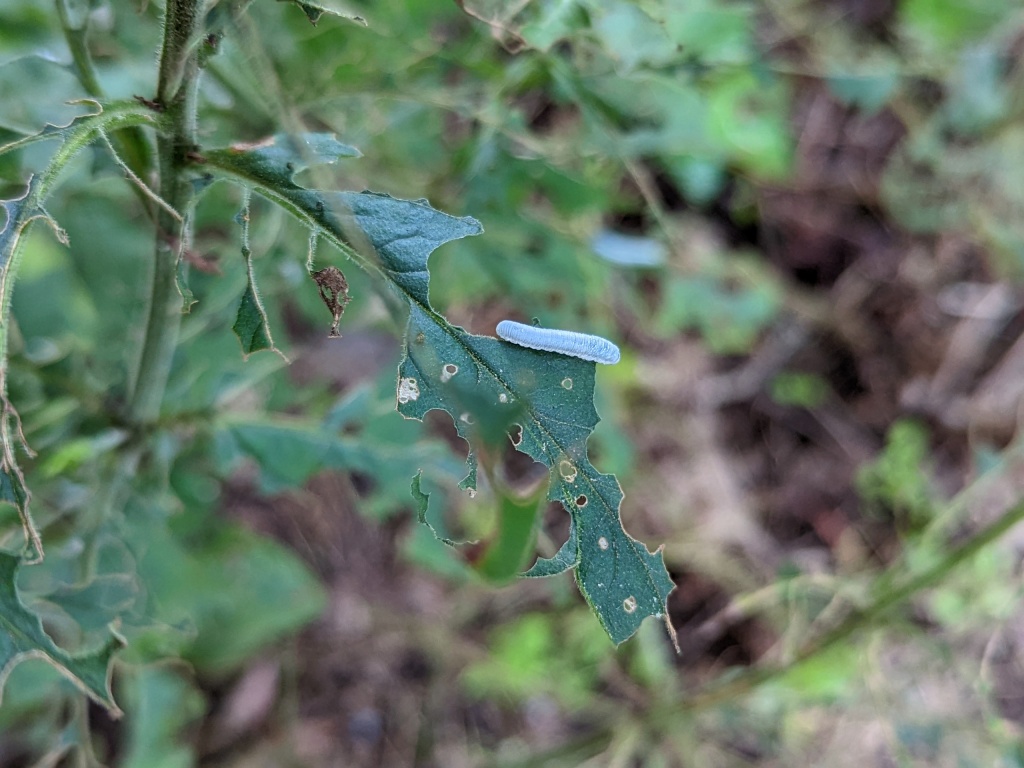So, you expect my garden is better than yours? It must be perfect, you think.
Bigger, perhaps, but less weedy, disease free, not a chance. Here, are prime examples of everything that can go wrong in a garden, though to me none are so horrible and while a spotted dogwood or hydrangea stands out when you’re standing in front of it, not everything in the garden is terrible at once. I hope a visitor will walk away impressed, even with some obvious faults.
There is never a time when the garden is weedless and manicured, and always one plant or another is troubled. I do almost no pruning, preferring one thing or another to outgrow its space. In a thirty-three year old garden some smaller plants might fade and disappear without notice, but mostly plants work things out with little need for intervention.

I am rarely concerned by leaf problems. Mildew and black spotting are common by late summer, and while one hydrangea or another might be unattractively spotted, all will be fine. A dogwood in the front garden suffers annually from multiple issues, though with more mild spotting this year (above). It must be pointed out that hybrid and Kousa dogwoods suffer few of the problems of our native (Cornus florida). I have happily planted some of all, so while other dogwoods are in peak health, the natives look miserable by late summer, at least upon close inspection. But, I’m happy to have them, spots, cankers, and all, and no matter that I’ve expected the dogwood’s demise for years, it keeps chugging along despite its problems.

A red horse chestnut (Aesculus x carnea, above) planted as a second choice to replace a storm damaged tree has earned my affection despite severe leaf spotting in late summer. It has grown quickly to fill a void I badly wanted to fill, but not too quickly to think it will overwhelm its neighbors, and how could I not love its red flowers and splendid foliage (until August)? I hear that cultivars might be resistant to the spotting, but I have what I have and there’s no going back. Nor do I want to.

Several of the mophead hydrangeas (Hydrangea macrophylla, above) are black spotted. One by the driveway is spotted every late summer, but still it manages to rebloom a few flowers by early October. Other hydrangeas in the garden vary, some getting no spots and some occasionally with no rhyme or reason. Certainly, I’ve never given a thought to spraying for the spots. This does remind me, there are a few ancient varieties that rarely show more than a flower or two, and most years the dead stems and flower buds must be cut back, so there are no blooms. Why have them? Some day I’ll dig these out to plant something that works, not just survives, but these are barely noticed with plenty of healthy neighbors.

There is occasionally an uproar when ants get into the house. They are a bit of a nuisance indoors, I suppose, but why would anyone object to them in the garden? A door-to-door pesticide salesman caught me in the garden recently and asked if I wanted to be rid of ants and other pests, expecting that of course I do. Even if I objected to ants, the bees and every other bug goes if they go. This garden will not be sterile.
Today, even though the flowers of ‘Sun King’ aralia appear past their peak, ants continue to roam the flower stalks. They’re not as entertaining as bees and any other flying insect, but they’re here to do a job.

The chirping of birds is a constant in the garden, so I suppose that explains the meager numbers of caterpillars. I was delighted recently to see several Monarch butterfly caterpillars (above) chomping on a milkweed one day, then disappointed the next when they were gone. There are plenty of other butterflies in the garden, most noticeably swallowtails, but also many smaller butterflies and moths, so there must be caterpillars somewhere.

There are caterpillars on a vigorous lysimachia (above) that spreads beneath the black spotted dogwood in the front garden. The caterpillars only chew leaves in part sun, so the largest portion of the clump is uneaten. Undoubtedly, the plain, white caterpillars grow into similarly unremarkable moths, but by this late in the season the lysimachias don’t care, so why should I?

I’ve noticed a few folded leaves on several redbuds, and inside the fold are many tiny eggs. I’ve had caterpillars on redbuds in early autumn in the past, but it seems these will develop too slowly to be any kind of a problem. I’m guessing they’ll drop and overwinter in the piles of leaves that are left until early spring. Anyway, if they get to chewing it won’t be long before the leaves will drop, so what’s the problem?
The garden’s looking great in mid September, though minor issues lurk around every corner.
Loved the sentiments in this post. Thanks.
I occasionally get discouraged when there’s a problem, but these are worked through, sometimes a little at a time, but always stopping to appreciate the beauty. If the garden is a bother, why do it?
You have a great attitude and and a fantastic yard. I enjoy hearing that you let things flow, not bothering with pruning, or stressing about problems that arise.
My current angst (not bad) is Perfect storm rose mallow that still hasn’t bloomed. They’ve been close for weeks. I hope that an early frost (it happens a lot in central oregon) won’t kill them when they open.
I always enjoy the posts, thank you.
My advantage with a large garden is that even when a hydrangea never flowers, there’s always another or many others that do. Then, I can just not worry about it and think about replacing it every time I walk past, or I can pull it out and then feel really good when its replacement flowers.
Dave, Thank you for this column. Maybe my heart won’t skip a beat the next time I see something amiss.
Every garden has some problem, but while the gardener of a nearly immaculate garden is horrified by a few chewed leaves ruining his perfection, I expect much less. I’m excited to see caterpillars nibbling the lysimachias. The garden is not just a showplace, but a habitat for all its residents.
It is so reassuring to read your blog, as I tend a lot of the same plants here in Columbia, MD; just wish I had room for more trees! The spotting dogwoods had been a worry since last summer, but as you noted, they were just fine in the spring. My favorite (not to temp fate), an Edgeworthia, is getting huge and producing buds. That takes a bit of the sting out of thoughts of winter. Many thanks for your insights and guidance. There will always be needs unmet here, but even when it runs itself, it is beautiful.
My six edgeworthias are my favorites. Several years ago, when we still got cold winters, several suffered considerably in multiple nights below zero. There were no flowers in late winter, and when new growth showed on branches all were cut back from six feet to three feet wide. They were horrible, but they recovered to full size in two years, and now three are each close to twenty feet across. The memory of the loss, the recovery, and now I must chop them back after flowering this spring so they don’t overwhelm neighbors is the joy of gardening.